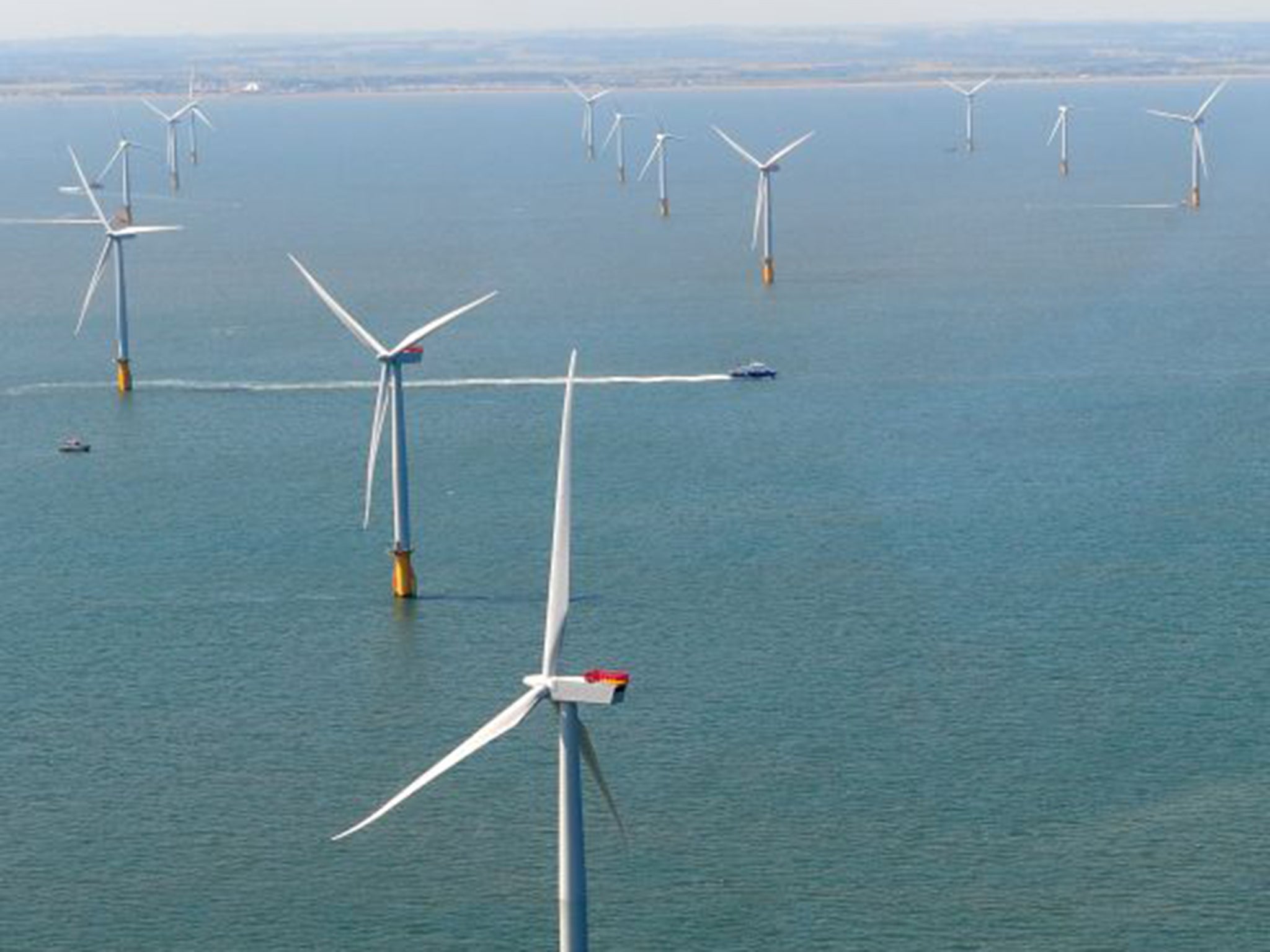'World's largest floating windfarm' to be built off Scottish coast
Scotland hopes to become a world leader in floating wind turbine technology

A floating windfarm — said to be the largest in the world — is to be built off the coast of North-East Scotland, after the Scottish Government gave its approval.
Eight six-megawatt turbines will be installed about 15km south-east of Aberdeen and will provide enough power for about 56,000 homes.
About 110 jobs will be created by the company involved, Kincardine Offshore Windfarm Ltd.
Announcing planning permission had been granted, Scottish Energy Minister Paul Wheelhouse said the project would help “cement our place as one of the world’s leading nations in the innovation and deployment of floating offshore wind”.
“If the technology can be demonstrated at scale, it has huge potential to help Scotland meet its energy needs and to develop a supply chain that can service opportunities elsewhere in Europe and in markets such as South East Asia and North America,” he added.
“Our commitment to supporting low-carbon energy is outlined in our new draft Energy Strategy which sets out next steps and how we will continue to transition to a low-carbon economy, with the offshore wind sector to take an increasingly influential role.
“With 25 per cent of Europe’s offshore wind potential, and through development with due regard to our natural environment, Scotland is uniquely and strongly positioned to maximise the economic and environmental benefits that the technology can deliver, which will help us progress towards our carbon emission reduction targets.”
As the North Sea oil and gas industry declines, it is hoped the expertise gained in working in marine environments will help Scotland create new jobs in the offshore wind, wave and tidal energy industries.
Floating turbines require less material to make that traditional offshore windmills which are sunk into the seabed, so are more cost-effective. The technology could be particularly useful in locations where the water is particularly deep.
Lang Banks, director of WWF Scotland, welcomed the news.
“The continued development of floating turbines in Scotland is encouraging as it could enable us and other nations to secure even more clean power from offshore wind,” he said.
“One thing is clear, if we are to meet our future climate and energy targets we will certainly need both more onshore and offshore wind in the future.
“With the right political support for offshore wind and other technologies, Scotland can remain on course to secure half of all its energy needs from renewable sources by 2030.
“Research shows that generating half of our energy from renewables by 2030 is both necessary and achievable.”
Join our commenting forum
Join thought-provoking conversations, follow other Independent readers and see their replies
Comments